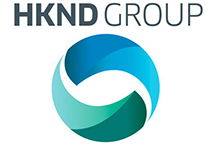 |
 |
|
| eNews • June 2015 | ||
| Promoting a Cost-Effective, Reliable and Competitive Transportation System |
||
 Environmental report on Nicaragua Canal completed
Environmental report on Nicaragua Canal completed
HKND Group, the company planning to build a canal across Nicaragua in partnership with the country’s government, said an Environmental and Social Impact Assessment report, completed by the British company Environmental Resources Management, was presented to the Nicaraguan government in Managua last week.
In June 2013, the Nicaragua National Assembly approved an agreement with HKND to build and operate the canal and other potential infrastructure, including two ports, a free trade zone, and an international airport.
HKND said the 11,000 page report took two years to complete and includes information about geology, soil, groundwater, surface water, air, noise, vibration, and marine, freshwater and terrestrial ecosystems; while the social studies cover social resources, community health and cultural heritage together with local economy and employment.
Telémaco Talavera, spokesman for the Nicaraguan Grand Canal Commission, said the assessment found the project “was viable” and supported the proposed 172-mile route, according to a report in the International Business Times. That account said, “details of the report remain hidden from the public for now. The study goes next to the Environmental Ministry for analysis and review and will likely be released to the public in July," Talavera said.
Asked about the Nicaragua Canal last month during a program at the Center for Strategic and International Studies in Washington, Jorge L. Quijano, the chief executive of the Panama Canal Authority, said his company is “focused right now on actually getting our canal done” and plans on opening it next April.
Quijano said, “We are concentrating on our effort, not on what Nicaragua wants to do or may be able to do in time. We have very competitive pricing. If something like the Nicaragua Canal is built as an investment they will have a very difficult time to compete with Suez, the Panama Canal and with the West Coast ports.”
The Panama Canal plans on beginning to fill the new locks on the Atlantic side of the waterway later this month and the locks on the Pacific side about a month later, said Quijano. The process of filling each set of locks will take about 9 weeks with the tests scheduled to finish on the Atlantic side in August and on the Pacific side in October.
Filling the locks takes a great deal of time because the valves, gates and gate seals all have to be tested, he explained. The navigation testing with canal pilots and towboat captains, who will assist ships through the canal, will be conducted through March.
Quijano noted that the proposed Nicaragua Canal would be much longer than the Panama Canal, about 278 kilometers compared to the Panama Canal’s 80 kilometers.
Specifications for the Nicaragua Canal show it would be able to accommodate ships of up to 400,000 dwt.
Building such a large canal would require 4.6 billion cubic meters of excavation plus another almost 1 billion cubic meters of dredging volume, which Panama Canal Authorty estimates would cost between $60 billion and $70 billion.
To put that number in perspective, Quijano said excavation by France and the U.S. amounted to just 201 million cubic meters by the time the Panama Canal first opened a century ago. Improvements and construction of the third set of locks still only brings the amount of excavation and dredging in Panama to just 549 million cubic feet in 134 years.
“During the current expansion…the best we could do with all of the dredging and all the expansions being done simultaneously was 140,000 cubic meters a day. We had all kinds of dredgers, we had all kinds of heavy equipment all over the place. But what Nicaragua needs to do to construct this in 5 years is 3.1 million cubic meters a day - that’s one and a half Cheops pyramids per day. That’s a factor of 22 times.”
If the canal is being built as an investment and ever comes on line “we will be very competitive,” Quijano added. “If you have to charge the tolls that they need to charge, you would rather put that vessel going around Cape of Good Hope. So that’s why we see that the canal has to be something beyond an investment.”
SOURCE: American Shipper
Soy Transportation Coalition |
|
